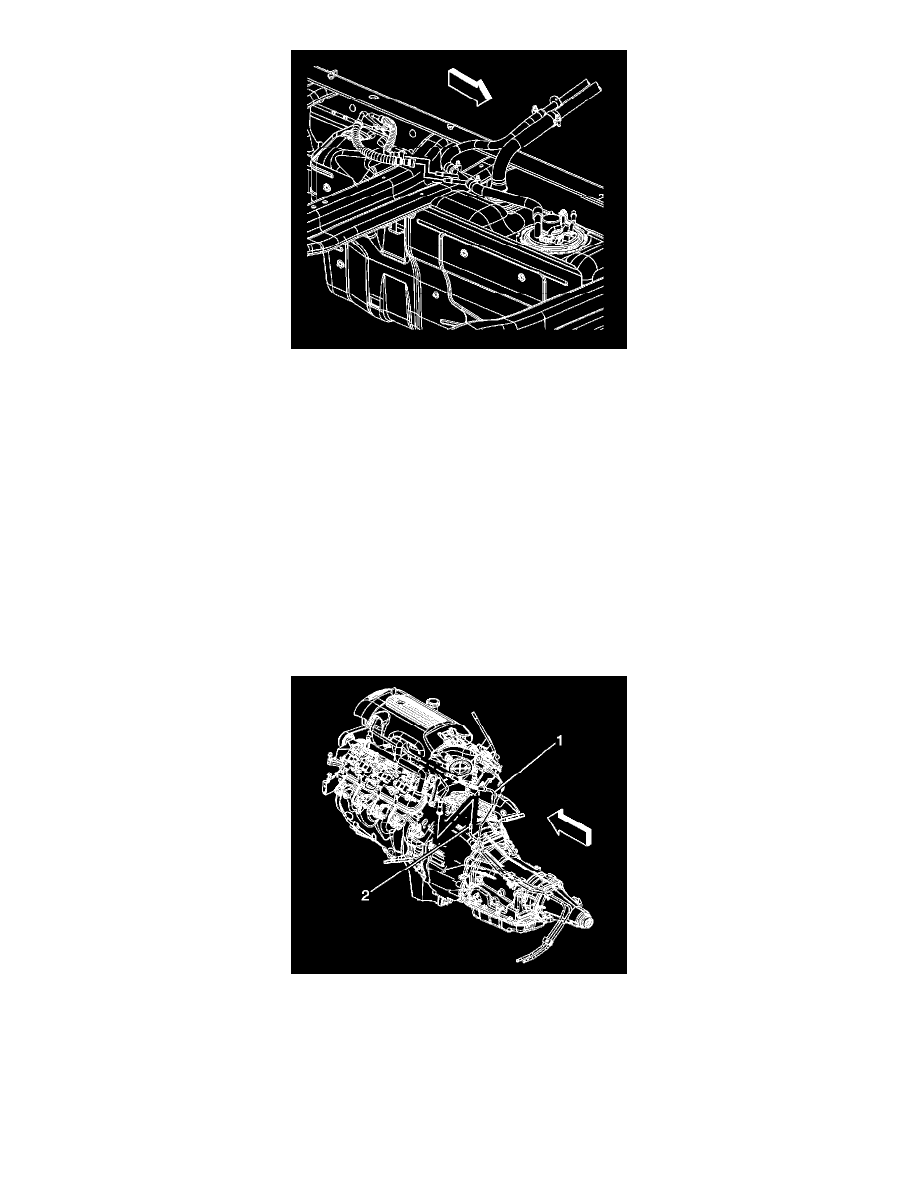Sierra Classic 2500 4WD V8-6.0L (2007)

5. Remove the caps from the fuel and balance lines at the fuel tank.
6. Connect the fuel feed and pressure balance lines from the front tank.
7. Install the fuel fill cap.
8. Connect the negative battery cable.
9. Perform the following procedure in order to inspect for leaks.
1. Turn the ignition ON, with the engine OFF, for 2 seconds.
2. Turn the ignition OFF for 10 seconds.
3. Turn the ignition ON, with the engine OFF.
4. Inspect for fuel leaks.
Evaporative Emission (EVAP) Hoses/Pipes Replacement - Chassis (Pickup)
EVAPORATIVE EMISSION HOSE/PIPE REPLACEMENT - CHASSIS (PICKUP)
REMOVAL PROCEDURE
IMPORTANT: Clean the fuel and evaporative emission (EVAP) connections and surrounding areas prior to disconnecting the lines in order
to avoid possible system contamination.
1. Relieve the fuel system pressure. Refer to Fuel Pressure Relief (With CH 48027) Fuel Pressure Relief (Without CH 48027).
2. Disconnect the fuel feed line (1) at the engine.
3. Disconnect the EVAP canister purge tube line (2).
4. Cap the fuel rail in order to avoid possible system contamination.
5. Raise and suitably support the vehicle. Refer to Vehicle Lifting.
